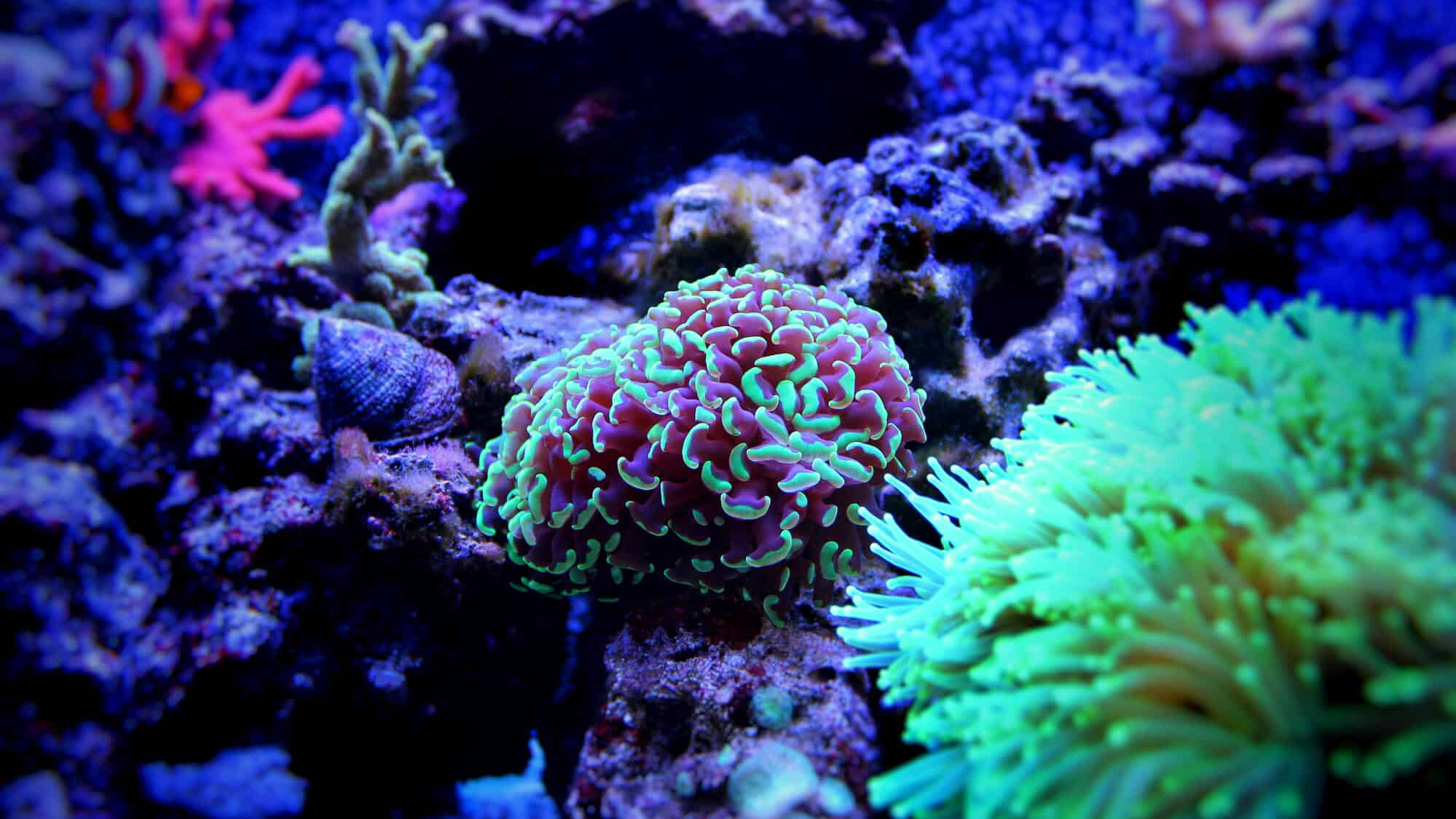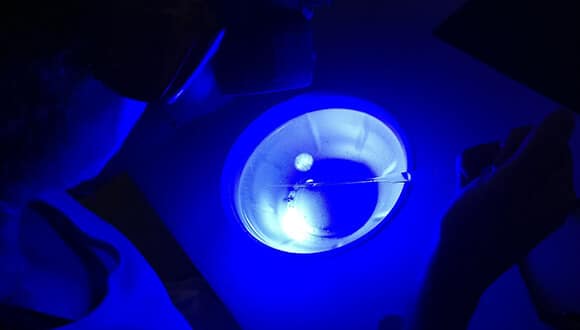Researchers have discovered that corals also glow at depth to lure their prey

Glowing corals have fascinated nature lovers and scientists for centuries. They are a source of attraction not only for divers but also for many animals, mostly on the reefs close to the shore. Marine researchers know that there are glowing corals even at a depth of 45 meters, but the biological role of the phenomenon is subject to ongoing debate. A new study by Tel Aviv University in collaboration with the Inter-University Institute of Marine Sciences in Eilat, proved for the first time that the magical phenomenon in deep reefs where corals show glowing colors under blue light (fluorescence), is intended to be used as a mechanism to attract prey. The research shows that marine animals, which are considered prey for corals, recognize the glowing colors and are drawn towards it.

got the green light
The research was conducted under the leadership of Dr. Or Ben-Zvi and in collaboration with Yoav Lindman and Dr. Gal Eyal, all three from the laboratory of Prof. Yossi Levia at the zoology school and the Steinhardt Museum of Nature at Tel Aviv University. The study was published in the journal Communications Biology.
According to the researchers, several hypotheses have been tested over the years, for example, is the phenomenon used to protect against radiation? To optimize photosynthesis? as antioxidant activity? To protect against herbivores or to attract symbiotic algae to the coral? In the latest research, it was proven as mentioned that the function of the shining light is to act as a bait for the prey.
As part of the study, the researchers sought to examine the proposed role of prey attraction. For this purpose, they first sought to determine whether plankton (small creatures that drift in the sea with the currents) are attracted to fluorescence both in the laboratory and in the sea. The researchers then quantified in the laboratory the predation abilities of mesophotic corals (corals that live between the area of shallow coral reefs and the deep and completely dark area of the ocean), which present different fluorescent shows.
In order to examine the potential attraction of plankton to fluorescence, the researchers used, among other things, an Artemia salina type of crab, which is used in many experiments as food for corals. The researchers observed that when cancer was given a choice between a green or orange fluorescent target versus a transparent control target, the cancer showed a significant preference for the fluorescent target. The green fluorescent target attracted more than twice as many crabs as the clear trap and 1.3 times more against the orange target.
Furthermore, when the crabs were given a choice between two transparent targets, the results showed that the crab's choices were observed to be randomly distributed in the experimental set-up. Overall, in all the experiments conducted in the laboratory, the crabs showed a preferential attraction towards a fluorescent signal. Compared to the crabs, fish that are not considered prey for corals, did not show these trends and actually avoided fluorescent targets in general and orange targets in particular.
"The crabs showed a preferential attraction towards a fluorescent signal"
A dangerous party of colors
In the second stage, the experiment was carried out in the coral's natural habitat at a depth of about 40 meters in the deep sea. Also in this experiment the fluorescent traps (both green and orange) attracted twice as much plankton than the transparent trap.
"We conducted an experiment in the deep sea in order to examine the possible attraction of diverse and natural masses of plankton to fluorescence, under natural currents and the light conditions that exist in deep water. Since fluorescence is 'triggered' mainly by blue light (the light that dominates the depth of the sea), at these depths the fluorescence is naturally accentuated and the data that emerged from the experiment were unequivocal, similar to the laboratory experiment," explains Dr. Or Ben Zvi.
In the last part of the study, the predation rates of mesophotic corals (corals living at depths of 30 to 150 meters), collected in the Gulf of Eilat, were examined, and it was found that corals that exhibited green fluorescence enjoyed approximately 25% higher predation rates compared to corals with yellow fluorescence.
"Many corals display a fluorescent color pattern that highlights the mouth or the ends of the hunting arms, a fact that supports the idea that fluorescence, similar to bioluminescence (the creation of light in a chemical reaction), acts as a mechanism for attracting prey," explains Prof. Loya and continues "the research proves Because the bright and colorful appearance of corals can act as a lure mechanism to attract plankton with swimming abilities to land-based predators such as corals, especially in habitats where the corals require other sources of energy in addition to or as a substitute for photosynthesis (production of sugars using the light energy carried out by cooperative algae living within the tissue the coral)".
"Despite the gaps in existing knowledge regarding the visual perception of light and color signals by plankton, the present study presents research evidence supporting the role of fluorescence as a prey lure in corals and we assume that this hypothesis, which we call the 'light trap hypothesis', may also apply to other luminescent organisms in the sea And may play a greater role than previously proposed in marine ecosystems", concludes Dr. Ben Tzvi.
